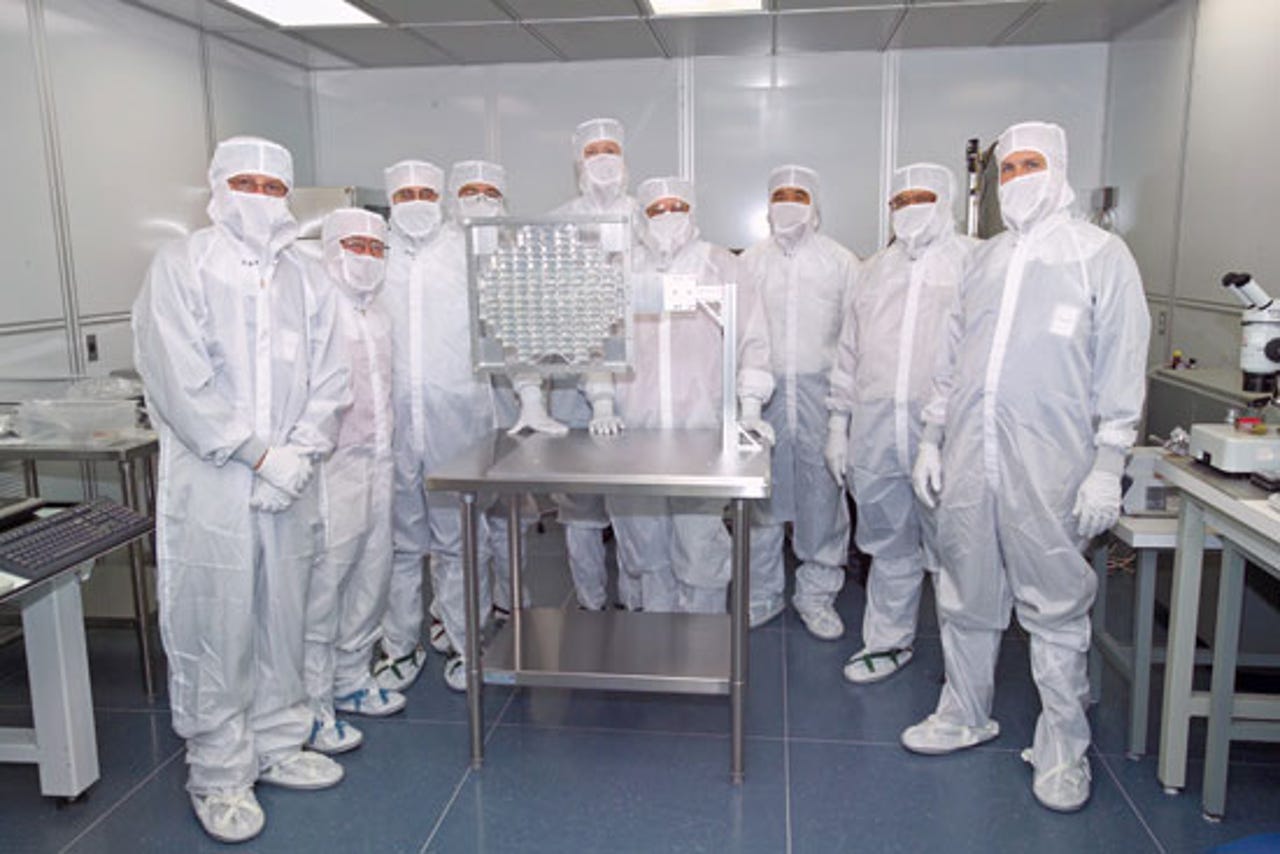Images: Streaking home with piece of comet's tail

Stardust
Stardust, NASA's comet-chasing space probe, is expected to make a showy return to Earth to complete its six-year, 2.88-billion mile journey. The craft was launched in 1999 and collected particles from the tail of comet Wild 2 in January 2004, when it approached within 147 miles of its body. When Stardust's comet dust-filled capsule returns to Earth, at about 3 a.m. MST Jan. 15, 2006, it will be visible as a point of light to the naked eye as it streaks across Nevada and Utah to its deserted landing site at the U.S. Air Force Utah Test and Training Range.
Wild 2
Stardust took this photo as it approched within 147 miles of the comet Wild 2 (pronounced "vilt two") on Jan. 2, 2004. The comet is named after its discoverer, Paul Wild.
dust collector
When it passed through the tail of Wild 2, Stardust's collector, filled with aerogel, acted like a catcher's mitt as it grabbed samples. At the time of Stardust's launch, on Feb. 7, 1999, NASA claimed that aerogel was the lightest man-made material on Earth.
aerogel
In an experiment using a special air gun, particles are shot into aerogel at high velocities to simulate the collection of samples from Wild 2's tail.
aerogel test
Scientists test the comet dust collector before the launch of Stardust, in February 1999.

Stardust team
Scientists who will examine the comet particles returned by Stardust try on their protective gear. The team has been preparing for the transport of the capsule containing comet debris into a clean room where it will documented, processed and analyzed.
parachuting
At about 9:57 p.m. PST on Jan. 14, Stardust will release its capsule, which is filled with comet dust. Four hours later the capsule will release a drouge parachute 110,000 feet above the Pacific Ocean. The main chute will open when it is about 10,000 feet above land. Here is an artist's concept of Stardust's sample return capsule parachuting down to Earth.
landing
Helicopters will be ready to rescue the capsule after it lands. Special off-road vehicles will be on standby in case weather prevents a helicopter pickup.
Deep Impact
NASA's Deep Impact spacecraft sent a probe that made a spectacular collision with comet Tempel 1 on July 3, 2005.